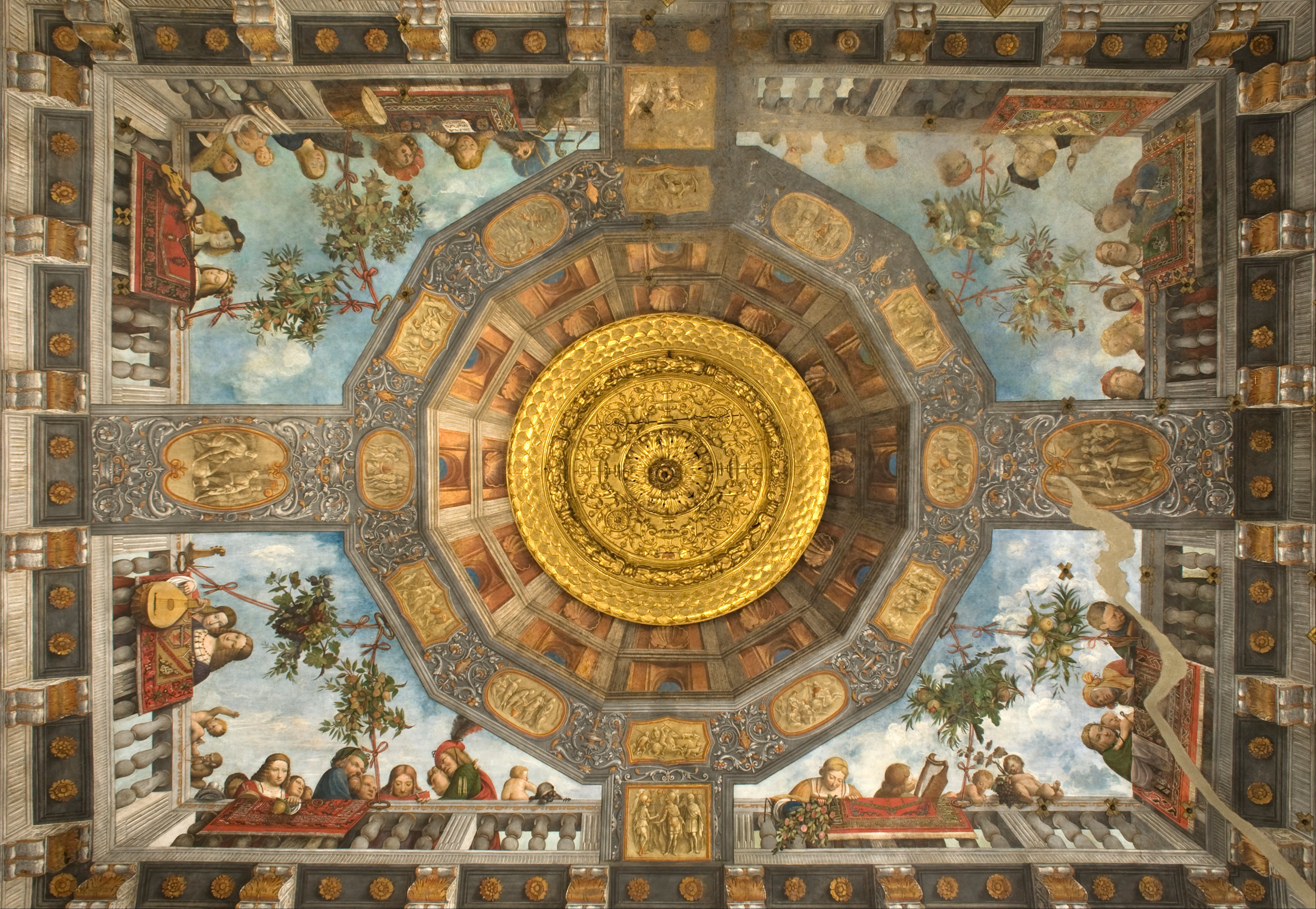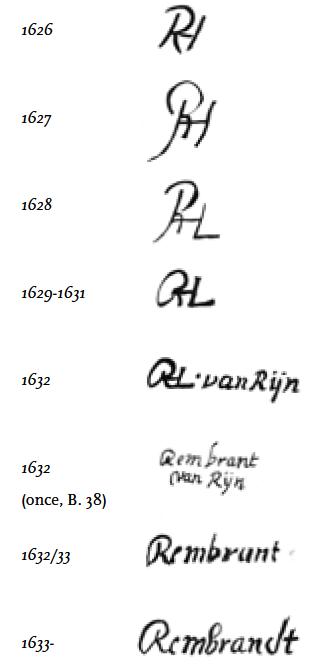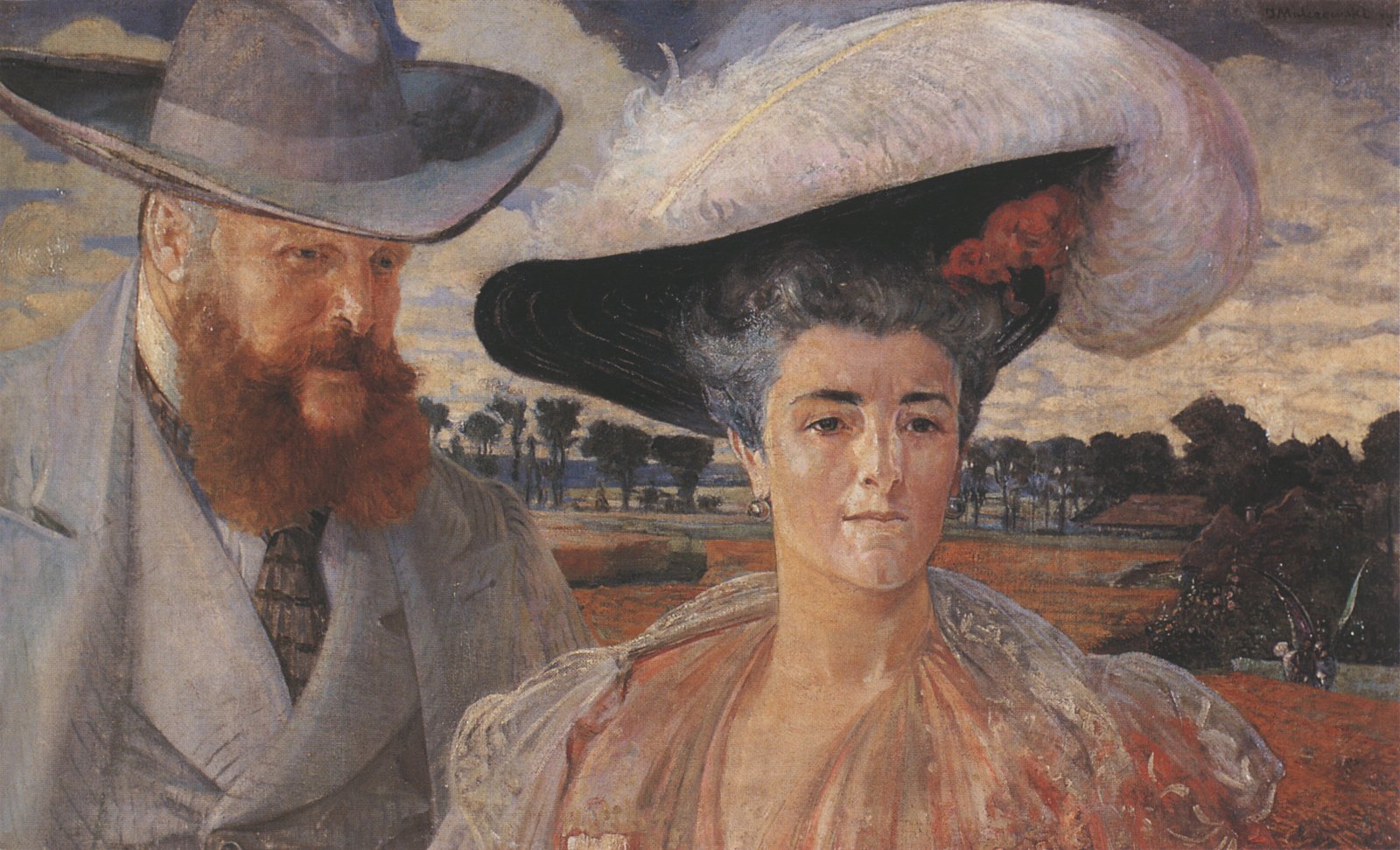|
The Girl In A Picture Frame
''The Girl in a Picture Frame'' is a 1641 oil on panel painting by the Dutch artist Rembrandt. It is also known as ''The Jewish Bride'' and ''The Girl in a Hat''. With '' The Scholar at the Lectern'' and ''Landscape with the Good Samaritan'', it is one of three Rembrandt paintings in Polish collections. It is currently located at the Royal Castle in Warsaw. Its authorship has sometimes been questioned, but was confirmed in 2006. Description The sitter is framed by a feigned picture frame of which only the bottom and right side are visible. She wears a dark red, velvet dress, a black hat and pear-shaped pearl earrings. This type of costume is not associated with the fashion of the time. When it appeared in portraits, it was treated as ancient attire that suited well the mythical, historical, oriental or biblical subjects. Rembrandt often portrayed figures dressed in this manner both in his oil paintings and etchings. It is not a portrait, but a ''tronie'', or a study of a hea ... [...More Info...] [...Related Items...] OR: [Wikipedia] [Google] [Baidu] |
Rembrandt
Rembrandt Harmenszoon van Rijn (, ; 15 July 1606 – 4 October 1669), usually simply known as Rembrandt, was a Dutch Golden Age painter, printmaker and draughtsman. An innovative and prolific master in three media, he is generally considered one of the greatest visual artists in the history of art and the most important in Dutch art history.Gombrich, p. 420. Unlike most Dutch masters of the 17th century, Rembrandt's works depict a wide range of style and subject matter, from portraits and self-portraits to landscapes, genre scenes, allegorical and historical scenes, biblical and mythological themes and animal studies. His contributions to art came in a period of great wealth and cultural achievement that historians call the Dutch Golden Age, when Dutch art (especially Dutch painting), whilst antithetical to the Baroque style that dominated Europe, was prolific and innovative. This era gave rise to important new genres. Like many artists of the Dutch Golden Age, such a ... [...More Info...] [...Related Items...] OR: [Wikipedia] [Google] [Baidu] |
World War II
World War II or the Second World War, often abbreviated as WWII or WW2, was a world war that lasted from 1939 to 1945. It involved the vast majority of the world's countries—including all of the great powers—forming two opposing military alliances: the Allies and the Axis powers. World War II was a total war that directly involved more than 100 million personnel from more than 30 countries. The major participants in the war threw their entire economic, industrial, and scientific capabilities behind the war effort, blurring the distinction between civilian and military resources. Aircraft played a major role in the conflict, enabling the strategic bombing of population centres and deploying the only two nuclear weapons ever used in war. World War II was by far the deadliest conflict in human history; it resulted in 70 to 85 million fatalities, mostly among civilians. Tens of millions died due to genocides (including the Holocaust), starvation, ma ... [...More Info...] [...Related Items...] OR: [Wikipedia] [Google] [Baidu] |
1641 Paintings
Events January–March * January 4 – The stratovolcano Mount Parker in the Philippines) has a major eruption. * January 18 – Pau Claris proclaims the Catalan Republic. * February 16 – King Charles I of England gives his assent to the Triennial Act, reluctantly committing himself to parliamentary sessions of at least fifty days, every three years. * March 7 – King Charles I of England decrees that all Roman Catholic priests must leave England by April 7 or face being arrested and treated as traitors. * March 22 – The trial for high treason begins for Thomas Wentworth, 1st Earl of Strafford, director of England's Council of the North. * March 27 – **The Battle of Pressnitz begins between the Holy Roman Empire and Sweden. **The Siege of São Filipe begins in the Azores as the Portuguese Navy fights to drive the Spanish out. After almost 11 months, the Portuguese prevail on March 4, 1642. April–June * April 7 – The dea ... [...More Info...] [...Related Items...] OR: [Wikipedia] [Google] [Baidu] |
Portraits By Rembrandt
A portrait is a painting, photograph, sculpture, or other artistic representation of a person, in which the face and its expressions are predominant. The intent is to display the likeness, personality, and even the mood of the person. For this reason, in photography a portrait is generally not a snapshot, but a composed image of a person in a still position. A portrait often shows a person looking directly at the painter or photographer, in order to most successfully engage the subject with the viewer. History Prehistorical portraiture Plastered human skulls were reconstructed human skulls that were made in the ancient Levant between 9000 and 6000 BC in the Pre-Pottery Neolithic B period. They represent some of the oldest forms of art in the Middle East and demonstrate that the prehistoric population took great care in burying their ancestors below their homes. The skulls denote some of the earliest sculptural examples of portraiture in the history of art. Historical portraitu ... [...More Info...] [...Related Items...] OR: [Wikipedia] [Google] [Baidu] |
The Jewish Bride
''The Jewish Bride'' ( nl, Het Joodse bruidje) is a painting by Rembrandt, painted around 1665‒1669. The painting gained its current name in the early 19th century, when an Amsterdam art collector identified the subject as that of a Jewish father bestowing a necklace upon his daughter on her wedding day. This interpretation is no longer accepted, and the identity of the couple is uncertain. The ambiguity is heightened by the lack of anecdotal context, leaving only the central universal theme, that of a couple joined in love. Speculative suggestions as to the couple's identity have ranged from Rembrandt's son Titus and his bride, or Amsterdam poet Miguel de Barrios and his wife. Also considered are several couples from the Old Testament, including Abraham and Sarah, Boaz and Ruth, or Isaac and Rebekah, which is supported by a drawing by the artist several years prior. While technical evidence suggests that Rembrandt initially envisioned a larger and more elaborate composition, ... [...More Info...] [...Related Items...] OR: [Wikipedia] [Google] [Baidu] |
Trompe-l'œil
''Trompe-l'œil'' ( , ; ) is an artistic term for the highly realistic optical illusion of three-dimensional space and objects on a two-dimensional surface. ''Trompe l'oeil'', which is most often associated with painting, tricks the viewer into perceiving painted objects or spaces as real. Forced perspective is a related illusion in architecture. History in painting The phrase, which can also be spelled without the hyphen and ligature in English as ''trompe l'oeil'', originates with the artist Louis-Léopold Boilly, who used it as the title of a painting he exhibited in the Paris Salon of 1800. Although the term gained currency only in the early 19th century, the illusionistic technique associated with ''trompe-l'œil'' dates much further back. It was (and is) often employed in murals. Instances from Greek and Roman times are known, for instance in Pompeii. A typical ''trompe-l'œil'' mural might depict a window, door, or hallway, intended to suggest a larger room. A version o ... [...More Info...] [...Related Items...] OR: [Wikipedia] [Google] [Baidu] |
Amsterdam
Amsterdam ( , , , lit. ''The Dam on the River Amstel'') is the Capital of the Netherlands, capital and Municipalities of the Netherlands, most populous city of the Netherlands, with The Hague being the seat of government. It has a population of 907,976 within the city proper, 1,558,755 in the City Region of Amsterdam, urban area and 2,480,394 in the Amsterdam metropolitan area, metropolitan area. Located in the Provinces of the Netherlands, Dutch province of North Holland, Amsterdam is colloquially referred to as the "Venice of the North", for its large number of canals, now designated a World Heritage Site, UNESCO World Heritage Site. Amsterdam was founded at the mouth of the Amstel River that was dammed to control flooding; the city's name derives from the Amstel dam. Originally a small fishing village in the late 12th century, Amsterdam became a major world port during the Dutch Golden Age of the 17th century, when the Netherlands was an economic powerhouse. Amsterdam is th ... [...More Info...] [...Related Items...] OR: [Wikipedia] [Google] [Baidu] |
Rembrandthuis
The Rembrandt House Museum ( nl, Museum Het Rembrandthuis) is a museum located in a former house in the Jodenbreestraat, in the center of Amsterdam. Between 1639 and 1658, the house was occupied by the well-known Dutch painter Rembrandt van Rijn, who also had his studio and art dealership there. The house was built around 1606 and was renovated around 1627, probably under the supervision of Jacob van Campen. It was then given an extra floor and a new facade with a triangular pediment. Rembrandt bought it on January 5, 1639 for thirteen thousand guilders. After his bankruptcy it was auctioned in 1658 and sold for eleven thousand guilders. In the following centuries it was used as a residence and was renovated several times. At the beginning of the 20th century, the building was in poor condition, and on the occasion of the Rembrandt Year in 1906, it was purchased in 1907 by the municipality of Amsterdam, which donated it to the Rembrandthuis foundation. Between 1907 and 1911 the ... [...More Info...] [...Related Items...] OR: [Wikipedia] [Google] [Baidu] |
Ernst Van De Wetering
Ernst van de Wetering (9 March 1938 – 11 August 2021) was a Dutch art historian and an expert on Rembrandt and his work. Background Ernst van de Wetering was born in Hengelo. He was first trained as an artist at the Royal Academy of Fine Arts in The Hague. He received his doctorate in art history from the University of Amsterdam in 1986. Between 1964 and 1968, he worked as a scientific illustrator of microscopic preparations at the Zoological Museum in Amsterdam. From 1968, he was a member and later became chairman of the Rembrandt Research Project. He was art historian on the staff of Amsterdam's Central Research Laboratory for Restoration from 1969 to 1987 and, from 1987, was full professor of history of art at the University of Amsterdam. He published extensively on historic painting techniques, as well as in the field of theory and ethics of conservation and restoration. In 1990, he succeeded Josua Bruyn as chair of the Rembrandt Research Project, the team of scholars tha ... [...More Info...] [...Related Items...] OR: [Wikipedia] [Google] [Baidu] |
Rembrandt Research Project
The Rembrandt Research Project (RRP) was an initiative of the Nederlandse Organisatie voor Wetenschappelijk Onderzoek (NWO), which is the Netherlands Organization for Scientific Research. Its purpose was to organize and categorize research on Rembrandt van Rijn, with the aim of discovering new facts about this Dutch Golden Age painter and his studio. The project started in 1968 and was sponsored by NWO until 1998. Research continued until 2014. It was the authority on Rembrandt and had the final say in whether a painting is ''genuine''. The documentation generated by the project was transferred to the Netherlands Institute for Art History and renamed the Rembrandt Database. Results As a result of the project, which analyzed documentation, techniques, and forensic research on Rembrandt paintings from his early years in Leiden until his death, the number of signed Rembrandt ''self-portraits'' around the world has been reduced by half. Also, more paintings have been attributed to s ... [...More Info...] [...Related Items...] OR: [Wikipedia] [Google] [Baidu] |
Karolina Lanckorońska
Countess Karolina Maria Adelajda Franciszka Ksawera Małgorzata Edina Lanckorońska (Polish pronunciation: a.rɔˈlʲi.na lant͡skɔˈrɔɲska11 August 1898 — 25 August 2002) was a Polish noble, World War II resistance fighter, philanthropist, and historian. Lanckorońska bequeathed her family's enormous art collection to Poland only after her homeland became free from communism and Soviet domination during the Revolutions of 1989. The Lanckoronski Collection may now, for the most part, be seen in Warsaw's Royal Castle and Kraków's Wawel Castle. Life Lanckorońska was born in Gars am Kamp, Lower Austria, the daughter of Count Karol Lanckoroński, a Polish nobleman from a Galician family, and his third wife, Countess Margarethe Lichnowsky von Woschütz, the daughter of Prince Karl Max Lichnowsky. Reared and educated in Vienna (capital of the Austro-Hungarian Empire, of which much of partitioned Poland was a part), where she attended university. She lived at her family ... [...More Info...] [...Related Items...] OR: [Wikipedia] [Google] [Baidu] |



.jpg)


.jpg)

